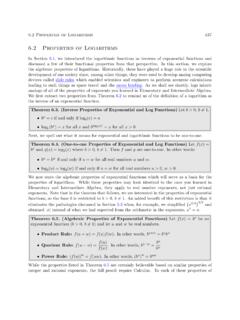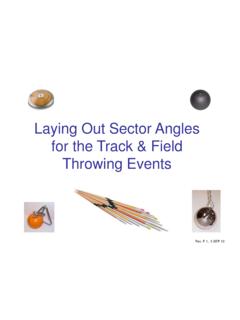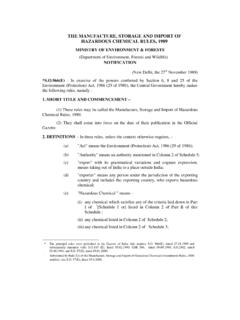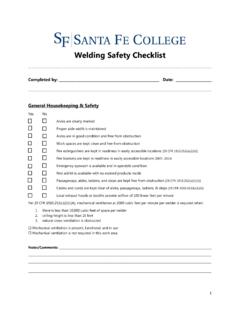Transcription of OFFICIAL RULES OF SOFTBALL
1 OFFICIAL RULES OF SOFTBALL . (Copyright by the International SOFTBALL Federation Playing RULES Committee). New RULES and/or changes are bolded and italicized in each section. References to (SP ONLY) include Co-ed Slow Pitch. Wherever FAST PITCH ONLY (FP. ONLY) appears in the OFFICIAL RULES , the same RULES apply to Modified Pitch with the exception of the pitching rule. "Any reprinting of THE OFFICIAL RULES without the expressed written consent of the International SOFTBALL Federation is strictly prohibited.". Wherever "he'' or "him" or their related pronouns may appear in this rule book either as words RULE 1 Sec. 1/DEFINITIONS/Altered Bat or as parts of words, they have been used for literary purposes and are meant in their generic sense ( To include all humankind, or both male and female sexes).
2 RULE 1. DEFINITIONS. Sec. 1. ALTERED BAT. A bat is altered when the physical structure of a legal bat has been changed. Examples of altering a bat are: replacing the handle of a metal bat with a wooden or other type handle, inserting material inside the bat, applying excessive tape (more than two layers) to the bat grip, or painting a bat at the top or bottom for other than identification purposes. Replacing the grip with another legal grip is not considered altering the bat. A "flare" or "cone" grip attached to the bat is considered an altered bat. Engraved ID marking on the knob end only of a metal bat is not considered an altered bat.
3 Engraved ID marking on the barrel end of a metal bat is considered an altered bat. Laser marking for ID purposes anywhere on the bat is not considered an altered bat. Sec. 2. APPEAL PLAY. A live or dead ball appeal is a play or situation on which an umpire cannot make a decision unless requested by a manager, coach or player of the non-offending team. Note: A coach or manager may only make a dead ball appeal, after stepping onto the playing field If made by a fielder, the fielder must be in the infield when making the appeal. The appeal may not be made after any one of the following has occurred. a. A legal pitch has been thrown or an illegal pitch has been called.
4 EXCEPTION: 1. An appeal for the use of an Illegal Substitute, Illegal Re-entry, a Replacement Player or Withdrawn Player (either leaving or returning to the line-up under the Replacement Player Rule) and not reporting to the umpire can be made anytime while such player is still in the game. 2. An appeal for runners switching positions on the bases they occupied may be made at any time until all such runners are in the dugout or the half inning is over. b. The pitcher and all defensive players have left fair territory; or c. The umpires have left the field of play following the last play of the game. These are the types of appeals: a.
5 Missing a base b. Leaving a base on a caught fly ball before the ball is first touched c. Batting out-of-order d. Attempting to advance to second base after making a turn at first base e. Illegal substitutions f. The use of unannounced players under the Replacement Player Rule 1. g. Illegal re-entry h. The use of unannounced players under the Designated Player Rule i. Runners switching positions on the bases they occupied. Sec. 3. BALL COMPRESSION. Ball Compression is the Load force in kilograms (pounds) required to compress a SOFTBALL ( inches) when measured in accordance with the ASTM (American Society for Testing and Materials) test method for measuring compression-displacement of softballs.
6 Sec. 4. BALL COR. The Coefficient of Restitution of a SOFTBALL when measured with the ASTM (American Society for Testing and Materials) test method for measuring the Coefficient of Restitution of softballs. Sec. 5. BASE LINE. RULE 1 Sec. 3/DEFINITINS/Ball Compression A Base Line is a direct line between bases. BASE ON BALLS. (FP and SP) A base on balls occurs when four pitches are judged by the plate umpire to be balls, including illegal pitches. The batter is awarded first base. This is sometimes referred to as a Walk (FP the ball is alive; SP the ball is dead). Sec. 7. BASE PATH. A base path is a direct line between a base and the runner's position at the time a defensive player is attempting (or about to attempt) to tag a runner.
7 Sec. 8. BATTED BALL. A batted ball is any ball that hits the bat, or is hit by the bat, and lands either in fair or foul territory. No intention to hit the ball is necessary. Sec. 9. BATTER. A batter is an offensive player who enters the batter's box with the intention of aiding his team to score runs. He continues to be a batter until he is either declared out by the umpire or he becomes a batter-runner. Sec. 10. BATTER'S BOX. The batter's box is the area to which the batter is restricted while in position with the intention of helping his team to obtain runs. The lines are considered as being within the batter's box.
8 Sec. 11. BATTER-RUNNER. A batter-runner is a player who has finished a turn at bat but has not yet been put out or touched first base. Sec. 12. BATTING ORDER. The batting order is the OFFICIAL listing of offensive players in the order in which members of that team must come to bat. When the line-up card is submitted, it shall also include each player's position. Sec. 13. BLOCKED BALL. A blocked ball is a batted, thrown or pitched ball that: a. Becomes lodged in the fencing, or b. Is touched, stopped or handled by a person not engaged in the game, or c. Touches any object that is not part of the OFFICIAL equipment or playing area, or d.
9 Is touched by a defensive player who is in contact with the ground that is not part of the playing area. A thrown ball touching a base coach accidentally (in or out of the coaches box) is not a blocked ball. 2. Sec. 14. BUNT. (FP ONLY). A bunt is a batted ball not swung at, but intentionally met with the bat and tapped slowly within the playing field. Sec. 15. CATCH. A catch is a legally caught ball, which occurs when the fielder catches a batted or thrown ball with his hand(s) or glove. a. In establishing a valid catch, the fielder shall hold the ball long enough to prove the ball is securely held and/or that the release of the ball is voluntary and intentional.
10 If the player drops the ball after reaching into the glove to remove it or while in the act of throwing, it is a valid catch. RULE 1 Sec. 14/DEFINITIONS/Bunt (FP ONLY). b. If the ball is merely held in the fielder's arm(s) or prevented from dropping to the ground by some part of the fielder's body, equipment, or clothing, the catch is not completed until the ball is in the grasp of the fielder's hand(s) or glove. c. The fielder's feet must be within the field of play, touching the out of play' line or being in the air after leaving live ball territory in order to have a valid catch. If the player has control of the ball when returning to the ground in the out of play' area, it is a valid catch.









